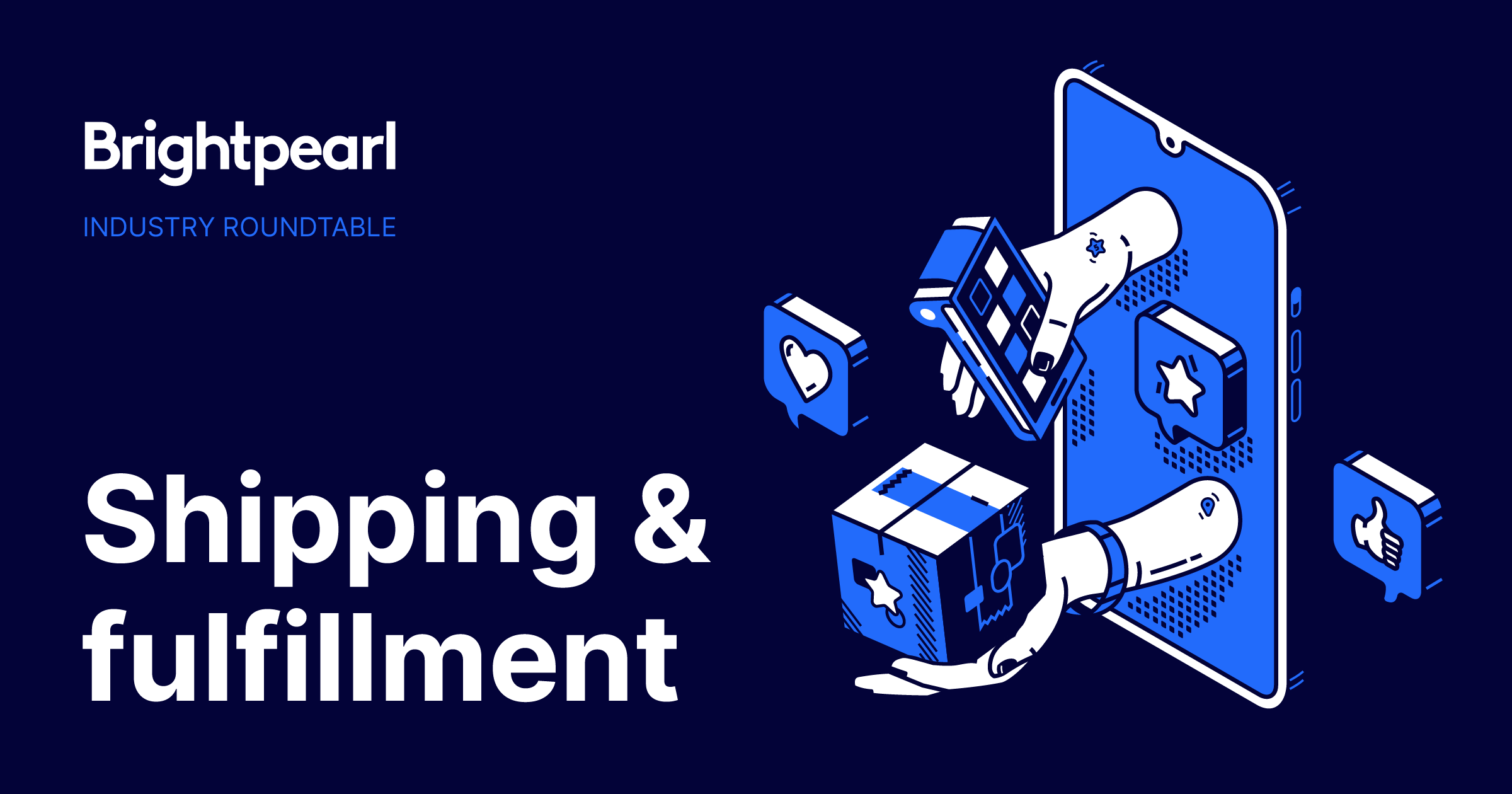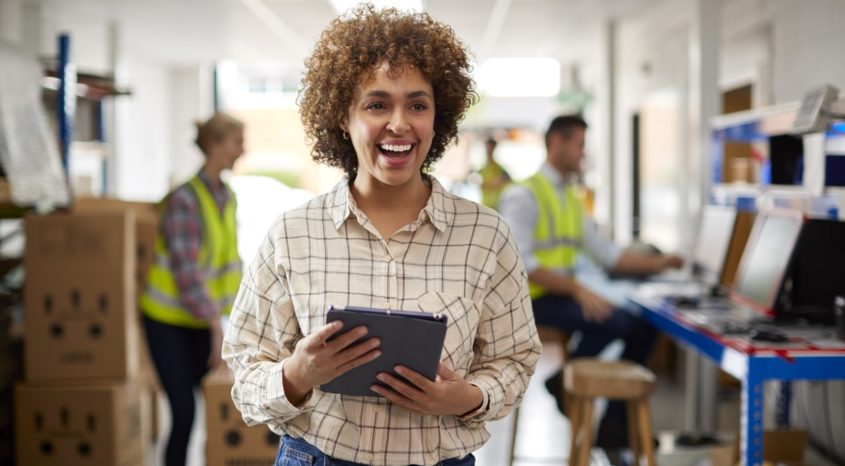The COVID-19 pandemic has drastically changed how we live, work, and shop. And while the return to “normal” life is getting closer, some of the behaviors consumers have picked up during the pandemic are here to stay.
Online sales were rising slowly before COVID-19, but we saw a huge spike when lockdowns and “stay-at-home” orders were enacted, and it shows no signs of slowing down. In fact, a recent Brightpearl survey found that 78% of consumers will be buying online more frequently in the next year, and 39% are expected to only buy online within the next five years.
This means that retailers must adapt their eCommerce channels to meet the needs of post-pandemic shoppers. In our first installment of the Industry Roundtable series, we want to focus on how retailers can improve shipping and fulfillment. In the same Brightpearl survey we mentioned above, 45% of consumers said that online deliveries are taking more time since the pandemic began and 42% of consumers say that unreliable delivery has lessened their trust in online shopping.
We asked a few of our partners some pressing questions about how retailers can innovate shipping and fulfillment strategies to meet new consumer expectations. See their answers below.
With 39% of consumers saying they can see themselves only shopping online within the next five years, how should retailers prepare their business for this new behavior?
“First, go to your favorite eCommerce site, and place an order. Take note of the entire post-purchase experience. What choices do you have regarding shipping? How long does it take for the order to ship? How are you communicated with? What is the unboxing experience like?
Now place an order on your site. Does the experience make you want to come back? Make a note of where you’re already doing things well and where there’s room to improve. The entire experience on the site, as well as post-purchase, is a chance to reinforce your brand and ultimately encourage the shopper to come back.” – Matt Crawford, General Manager of Shipping at BigCommerce
“In the early stages of lockdown, Parcelhub experienced a 250% increase in parcel traffic and a 100% spike in delivery tracking queries, placing unprecedented pressure on our staff, carriers, and online retailers we serve. During this unique and challenging year, we found retailers who have a diverse range of carriers at their disposal to ensure they were spreading the risk. The past 12 months have shown that you shouldn’t put all your eggs in one basket, because when unpredictable events occur such as carrier service degradation or natural disasters, you need an alternative shipping provider at your disposal.” – Simon Wright, Marketing Manager at Parcelhub
“It’s important to deliver an ‘on-brand experience from checkout to the front door. At Easyship, we believe that shipping can be a powerful lever for growth. By laying out your shipping policy, offering a mix of shipping solutions, enabling cross-border sales, and finally maintaining visibility through an on-brand tracking page—your brand not only controls how your customer experiences your store online but offline, as well. – Jacqueline Ostrov, Director of Partner Marketing at Easyship
“Get ready for returns. As users become more comfortable with the online experience, they are likely to become more comfortable with returning items.
Recall what it’s like to be on the receiving end of delays. Do you wonder why a company would promise something they couldn’t deliver? Do you dislike being uninformed and left waiting in silence? Don’t be like those businesses. Be better!
People know that accidents happen, circumstances are sometimes unavoidable, and every now and then we just have plain old bad luck. If you can demonstrate competence in solving those challenges and helping your customers ultimately get what they want, they are likely to have a positive impression of your brand.” – Julie Cleland, Director of Marketing at Blayzer Commerce
What are some shipping “perks” merchants can offer when free shipping isn’t an option?
“Clear communication and a frictionless checkout experience is, in and of itself, a perk. If local pickup is an option, that should also be offered. A good returns process is a perk that the retailer can offer in lieu of free outbound shipping. If the retailer can utilize a local option for the return (i.e., an in-store model or even a QR code to prevent the consumer from having to print the label), then that is certainly preferable.” – Krish Iyer, Head of Industry Relations and Partnerships at ShipStation
“One option is to offer ‘green’ shipping solutions. More and more customers will opt to use a ‘green’ solution if they can and will pay extra for that, feeling they are doing their bit of good for the environment” – Rebecca Jones, CEO and Founder at objectsource
“It’s about giving people options to have the delivery service they want, whether that’s named-day delivery, specific delivery slots, or same day/next day delivery. A number of reports have shown that consumers are actually prepared to pay for delivery, as long as they’re able to choose the service and that costs are clearly communicated.
For many of our subscribers, there is the option for providing additional service levels on top of standard delivery. For example, we have a large number of retailers, distributors, and wholesalers across the home and garden and domestic appliance markets delivering products in their own vehicles who also provide assembly or fitting for furniture; installation or set-up for electronics; or premium delivery to a room of choice for example.” – Dave Pickburn, Founder & CEO at Stream
“Free samples and add-ons, discounts or credits toward future purchases, personalized touches, special packaging, and gift-wrapping services are all great ways to add value to your customer experience and win sales when free shipping is not possible.” – Julie Cleland, Director of Marketing at Blayzer Commerce
Where do retailers struggle most when it comes to shipping and fulfillment and what can be done to combat those issues?
“Typical sellers struggle with the costs of shipping. Most entrepreneur’s don’t realize shipping costs can account for up to 20% of their product costs; and this isn’t effectively planned into their overhead. One way to offset costs to diversify your courier network, to ensure you have the best value for all your lanes. By choosing a shipping solution like Easyship, merchants can access 250 pre-negotiated services on Day-1, meaning no thresholds and increased opportunities for cost savings and logistic efficiencies. – Jacqueline Ostrov, Director of Partner Marketing at Easyship
“Communicating shipping in the checkout process and afterward is key. If there is a potential delay, then it’s critical to notify the customer. Customers are generally understanding of shipping delays when the retailer is transparent, particularly in light of COVID-19. Additionally, many retailers, especially SMBs, have a fear of losing control or don’t know where to start. Investing in a third-party fulfillment company allows your products to be closer to your customers upon delivery. This leads to quick delivery and even lower shipping costs.” – Krish Iyer, Head of Industry Relations and Partnerships at ShipStation
“We see retailers struggle with two key things—only having one courier available to them and selling out-of-stock products. This is when we cannot stress enough to our clients that they need to invest in a good back-office system. A good back-office system will open up the ability for you to select the most cost-effective courier for the package and destination, and it will also synchronize your inventory values, saving customer service cost and customer dissatisfaction.” – Rebecca Jones, CEO and Founder at objectsource
Are you prepared for the online shopping boom?
Retailers that lack the infrastructure to keep up in the new eCommerce landscape could risk being left behind. We recommend listening to our partners’ advice above and writing a list of your shipping and fulfillment strengths and weaknesses. Then, you can plan for long-term innovations and changes that will make your customers happy as they continue to shop online for years to come.




